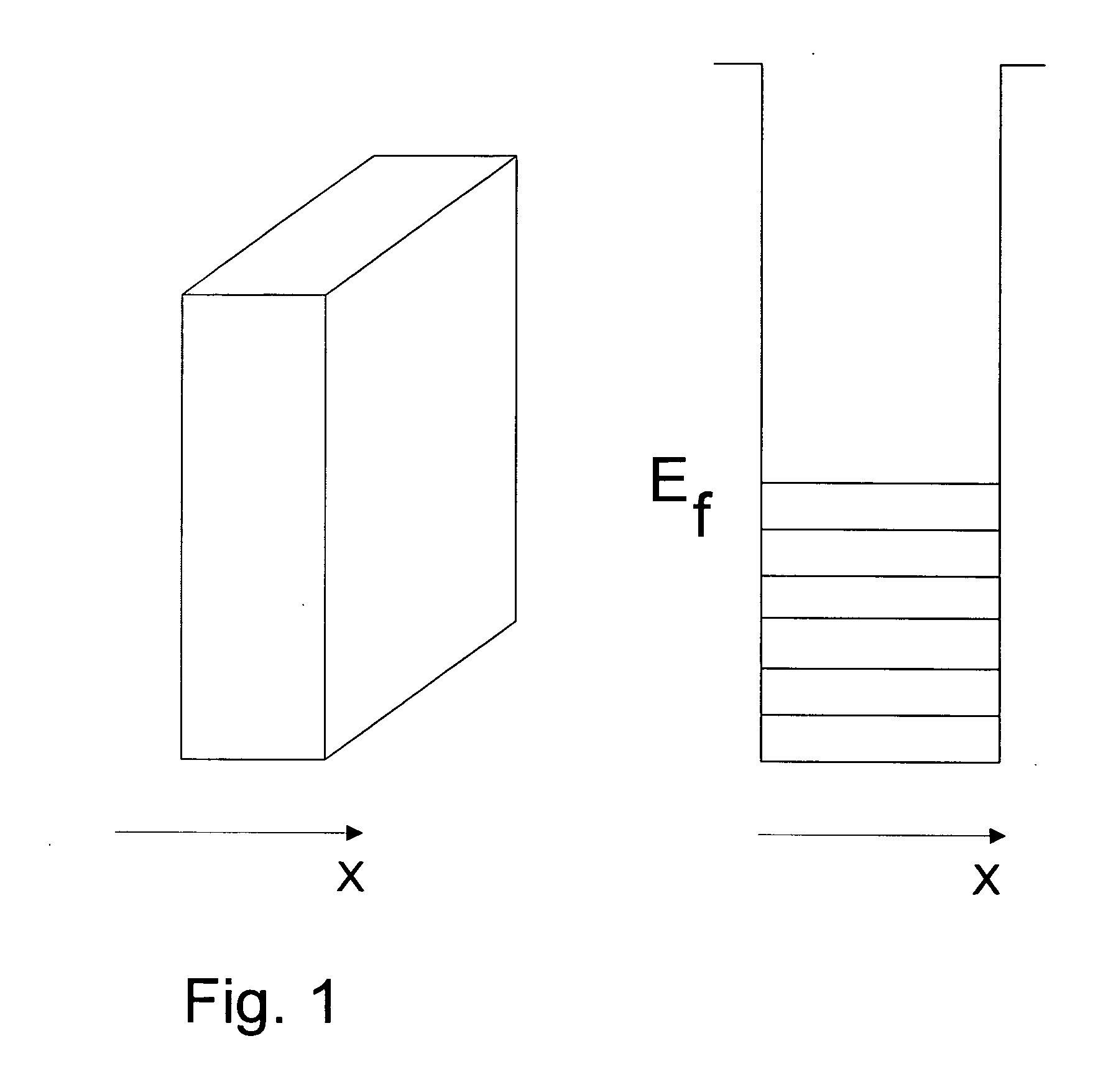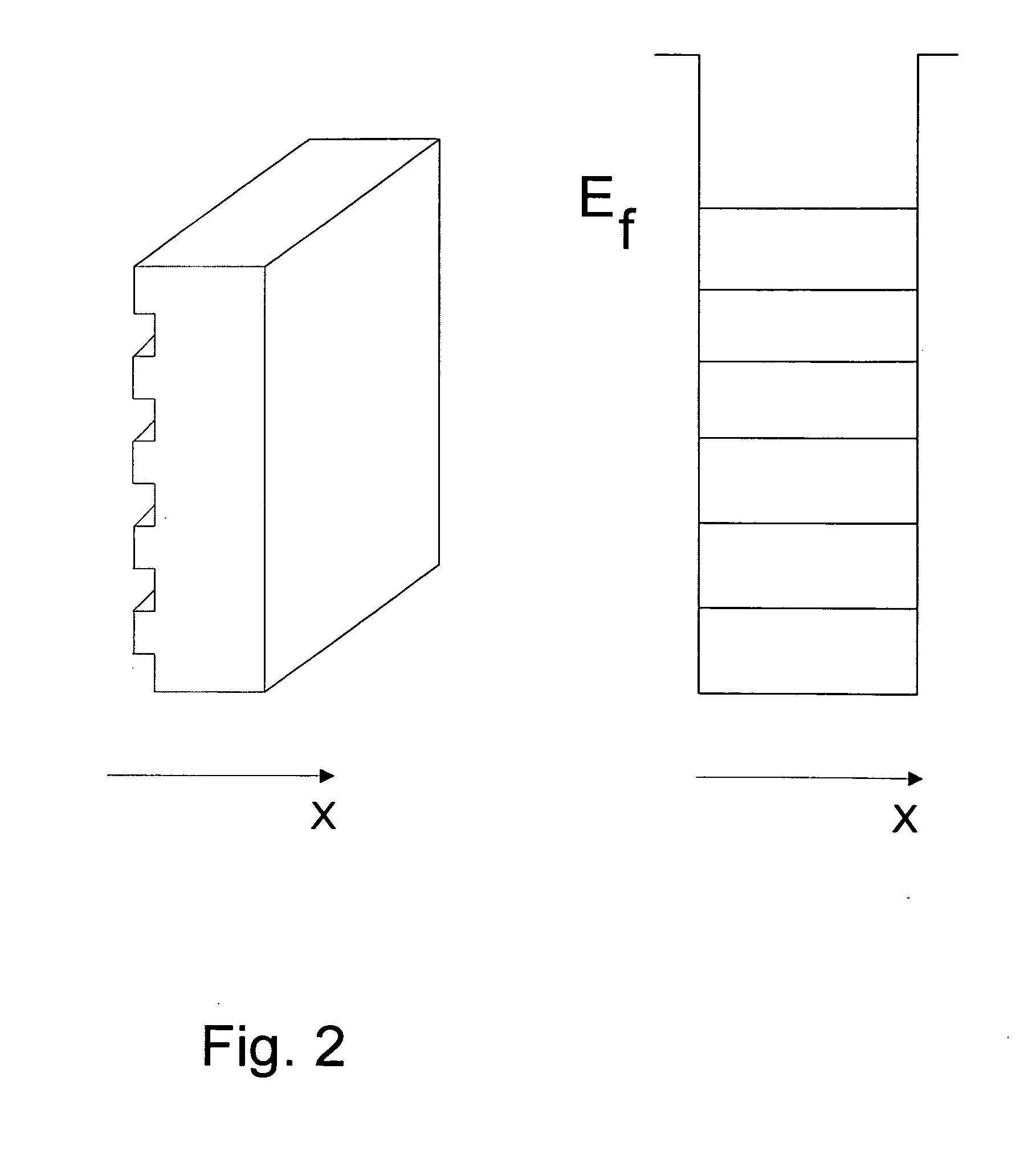Method of fabrication of high temperature superconductors based on new mechanism of electron-electron interaction
a superconductors and electron-electron technology, applied in the direction of superconductors, electrical devices, semiconductors, etc., can solve the problems of not fully applicable to this range of superconductors, not fully known superconductivity theory,
- Summary
- Abstract
- Description
- Claims
- Application Information
AI Technical Summary
Benefits of technology
Problems solved by technology
Method used
Image
Examples
Embodiment Construction
[0030] Embodiments of the present invention and their technical advantages may be better understood by referring to FIGS. 3-5. [31] The mechanism proposed as responsible for the present invention is best explained by referring to FIG. 3. Referring now to FIG. 3, which shows a first MPEB and a second MPEB as the external object referred to in the earlier discussion. We now have a composite system containing two excited subsystems of electrons in SDFG. It is clear that when the two MPEBs come close to each other, previously forbidden energy levels (shown as dotted lines in FIG. 3) start to reanimate in both due to the possibility of tunneling to the neighboring MPEB. Both MPEBs will attract each other with an attractive force that increases as the distance between the MPEBs decreases. Further, it is clear that it is the electrons from the two subsystems of SDFGs that attract each other. This type of attraction can be regarded as the mechanism responsible for the creation of Cooper pai...
PUM
 Login to View More
Login to View More Abstract
Description
Claims
Application Information
 Login to View More
Login to View More - R&D
- Intellectual Property
- Life Sciences
- Materials
- Tech Scout
- Unparalleled Data Quality
- Higher Quality Content
- 60% Fewer Hallucinations
Browse by: Latest US Patents, China's latest patents, Technical Efficacy Thesaurus, Application Domain, Technology Topic, Popular Technical Reports.
© 2025 PatSnap. All rights reserved.Legal|Privacy policy|Modern Slavery Act Transparency Statement|Sitemap|About US| Contact US: help@patsnap.com



